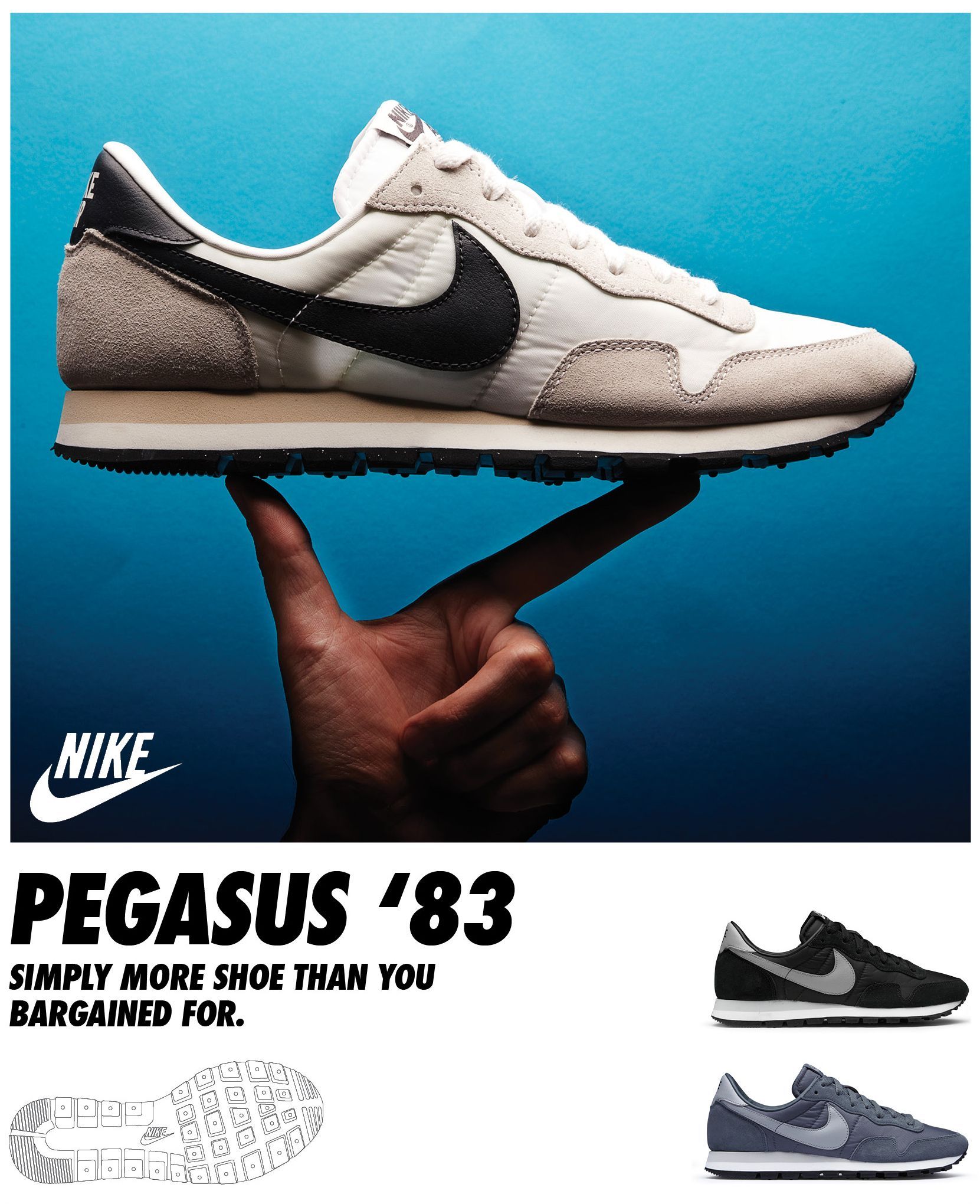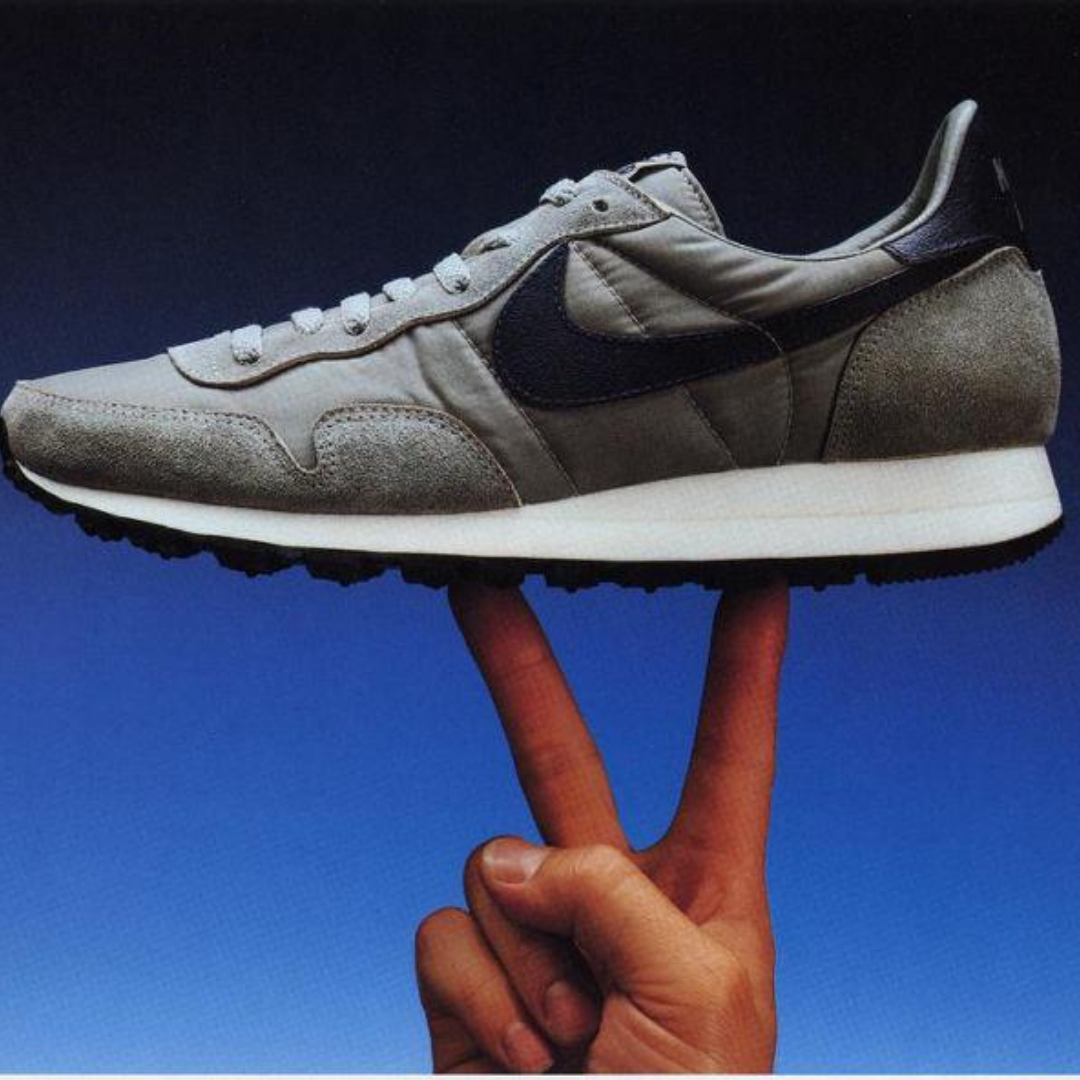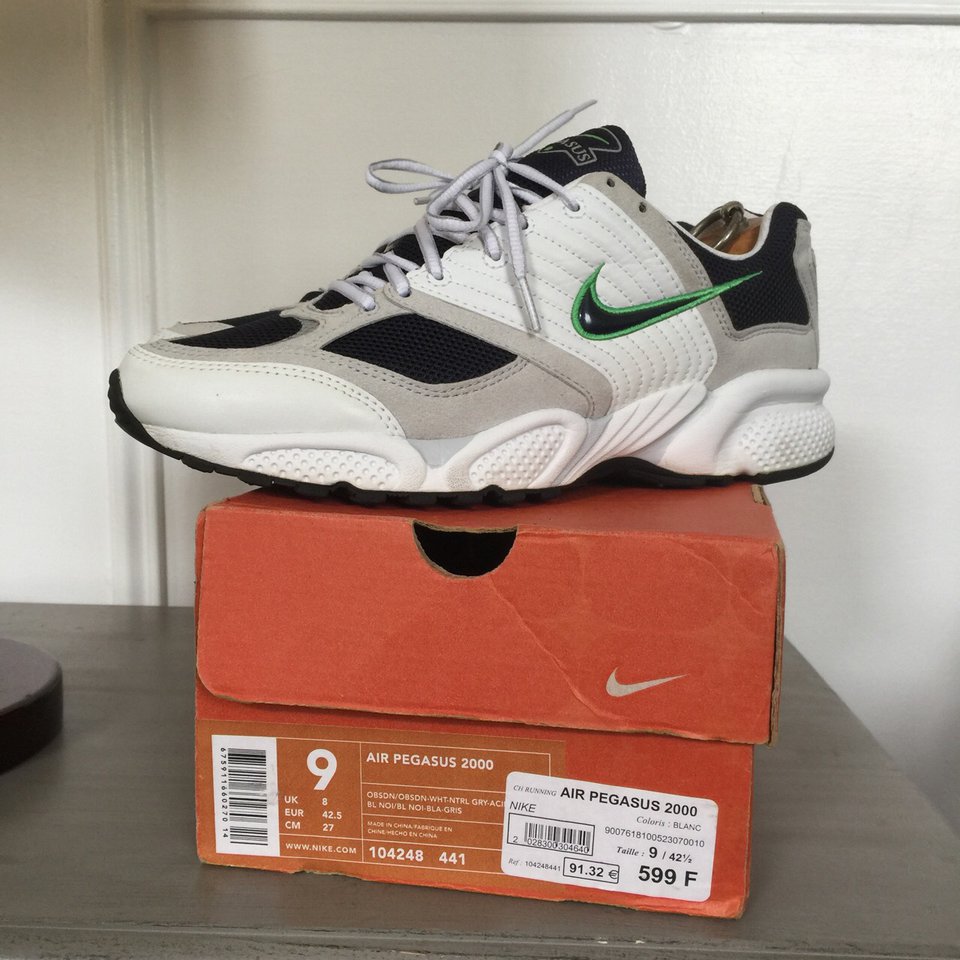
The Nike Air Pegasus are the best-selling line of Running shoes in the history of Nike.
A respectable goal.
But how they become the best-selling ‘Running shoes’ ever of the most popular ‘Running shoes’ maker brand ever?
The answer, for obvious reasons, is not a simple one. Success, they say, comes with perseverance and hard work. Ok maybe that’s a cliché but, this ordinary, economic and low-profile sneaker has come a long way to reach the Icon status that belongs to it today.
Let’s try to reconstruct the journey of this Beaverton legend who will soon return to the market to satisfy old and new generations of sneakerheads.

The Nike Pegasus adventure begins with a curious story.
With its gray tones and dark blue details, the first Nike Pegasus running shoes were defined by a European representative as a “Rainy day”.
But, since its release, for Nike it has been almost Sunny days only.
During the 80s, the Nike creative team was working on a running shoe which would have been the perfect solution for all running needs in terms of price, durability and performance, the so-called “Shoe for every runner”.
Among the other curiosities, which emphasize the legend, is the presence of former Nike CEO Mark Parker among the original team credited for its creation (which boasted the presence of another Nike design legend such as Bruce Kilgore). Parker, during the 80s, was in fact first “manager of advanced product designs” and later “director of design concepts and engineering”.
The other things that have contributed to its success is certainly to be attributed to the Name choice. With a brilliant marketing move for the time, which Nike will repeat with other models, the shoe was named after the winged horse of Greek mythology “Pegasus”, the perfect choice to recreate the sense of movement, speed and the desire to flight that the silhouette set out to convey.
And to think that it should not even have been called like that, in fact the chosen name was “Air Wedge Trainer” since the Pegasus were the first Nike shoes to have “the Air Wedge” as an air unit in the heel.
The success was immediate, in 1987 the Pegasus line had already registered 5 million dollars in terms of sales. From this moment the Pegasus line became a real Franchise.
In 1996, the first model with a visible Air unit was also introduced.



(in photo 1988 Nike Air Pegasus ACG, 1991 Nike Air Pegasus A/T, 1991 Nike Air Pegasus Racer)
Like all success stories, there comes a time when not everything goes the right way and it is difficult to replicate the achievement reached, the Pegasus line was no exception.
The franchise was temporarily stopped in 1997. In 1998, it was even renamed “Arma”. It made its official comeback in 2000 as the Air Pegasus 2000, designed by Air Max Plus designer Sean McDowell, as part of the new Bowerman series.

In 2004, for the first time in the history of the Pegasus line, a women’s version was designed and adapted specifically for the anatomy of the female foot.

Today, in 2021, after other years of success and having introduced other innovations, and being included in the Trail line, the Nike Air Pegasus returns in its OG form, from 1983, in two classic colorways. This retro version pays homage and stay faithful to the first version thanks to its nylon upper with suede panels, Swoosh and rear leather insert with contrasting Nike Air lettering, EVA midsole and rubber sole with the Logo label sewn on the tongue.
Don’t miss your chance to be a part of the Legacy.